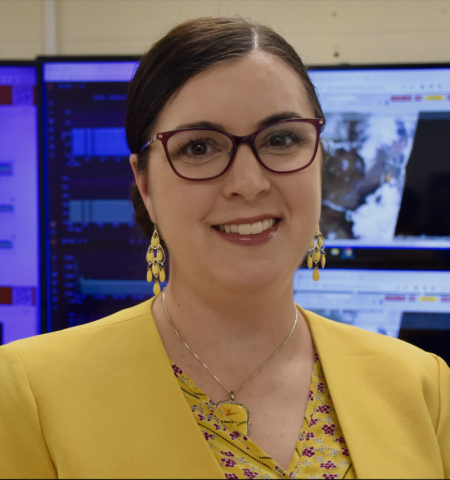Guest speaker: Professor D. Sarah Stamps, Department of Geosciences, Virginia Tech
Towards Volcanic Hazards Assessment in Tanzania Using Geodesy and Numerical Methods
Volcanic eruptions can pose hazards to nearby populations, agriculture, and infrastructure. Between 2007-2010, explosive eruptions of the volcano Ol Doinyo Lengai in the Natron Rift, Tanzania disrupted life for local Maasai peoples, tourists, and air traffic in the region. The Natron Rift lacked a monitoring network during these most recent explosive eruptions, which limited scientists’ and decision makers’ abilities to assess hazards. In this project, we established the TZVOLCANO network to monitor Ol Doinyo Lengai and investigate volcano-tectonic interactions in the Natron Rift, which currently consists of 6 continuous GNSS stations and 1 broadband seismometer. Most of the TZVOLCANO network stations stream low and high latency data to the National Science Foundation Geodetic Facility for the Advancement of Geoscience (GAGE) facility for public access, of which real-time positioning data are also made openly available through an EarthCube CHORDS portal. In a step towards detecting hazardous transient signals in low latency GNSS data, we developed a Jupyter Notebook that uses unsupervised machine learning algorithms (K-Means and Gaussian Mixtures) to detect anomalies and trained neural networks to predict vertical motions. The Jupyter Notebook successfully identified a M4.3 earthquake that occurred on 13 December 2022. High latency GNSS data in the form of a velocity solution has been used to investigate magmatic sources with inverse numerical modeling (dMODELS) that may feed Ol Doinyo Lengai. Inversions of a velocity solution spanning early 2016 to early 2023 indicates a shallow inflating spherical magma source (321 +- 203 m below sea level) with a volume change of 0.06 e106 +- 0.02e106 m3) located beneath the vent. We also evaluate GNSS time-series for transient signals using the Targeted Projection Operator (TPO) and find a transient uplift signal starting in late 2022. Our results, which suggest an ongoing inflationary period since late 2022, are regularly communicated to Tanzanian partners, and we have conducted extensive outreach to those living near Ol Doinyo Lengai.
